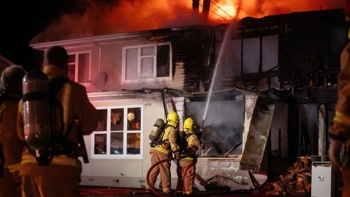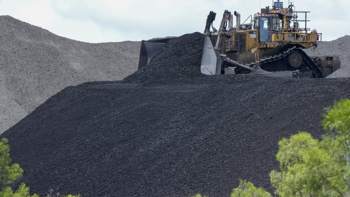
The decile system will be replaced with a new Equity Index from next January. Why was the change needed and what does it mean for your local school?
What's changing?
From 2023 every school will have an Equity Index (EQI) number ranging from 344 to 569. The higher the number, the more barriers students face in their educational achievement. The index replaces deciles, where schools were divided into 10 groups - decile 1 being the most disadvantaged, decile 10 was the least.
Equity index numbers have been calculated using 37 socioeconomic factors, including everything from transience and parents' benefit history to the parents' education level, all of them with different weightings. The full list of factors hasn't been published but extensive analysis has found the factors are most predictive of educational outcomes.
Each school's number will determine its share of an equity funding pool, which it can use to counteract educational disadvantage among its students. Previously $161 million of equity funding was shared out among the country's 2500 schools each year, weighted towards the lowest deciles. That's now increased by 50 per cent to $236m.
What was wrong with the old system?
Deciles have been around for almost 30 years, but they're now seen as relatively blunt and flawed. They were based on poverty and disadvantage in students' neighbourhoods, not on the students themselves, and were only reviewed every five years - equity index numbers will be updated every year.
Ministry of Education leader of operations Sean Teddy said the ministry now had access to much better data and understood the factors that most affected achievement.
It had taken six years to develop the EQI, which was first suggested by the previous National government. The education sector and Statistics NZ have been heavily involved, the Offices of the Privacy Commissioner and the Ombudsman were consulted and the model was independently reviewed last year.
Will any schools lose out?
There are fears some schools might protest if they lose funding, but Teddy said very few schools would be in that position.
"For the small number of schools that will receive less funding, we've put in transition arrangements," he said.
No school would get less equity funding per student next year, and those losing funding would do so gradually so they had time to adjust. The extra $75m a year should also help ensure few schools lose money even if their position relative to other schools has changed, and a smoothing process means schools shouldn't have big funding changes if their EQI changes from year to year.
Former Edgewater College principal Allan Vester, who led the sector reference group for the ministry, said a lot of care was being taken to make sure schools understood the index before finding out this September how much money they would get.
That was because "as soon as you tell schools what money is involved, the ones who are going to get more defend the system, and the ones who are going to get less spend the whole time looking for reasons why this isn't fair," he said.
How can I find out a school's EQI number?
Schools found out their EQI numbers last Friday, with all numbers to be published by the Ministry of Education in Term 3.
Regional data shows on average the most deprived schools are in Te Tai Tokerau - average EQI 506 - followed by Tairawhiti (491) and Bay of Plenty (489). Auckland and Canterbury/Chatham Islands have the lowest average EQI of 444 - however there will be large variations within regions.
Why is my school's EQI number so different to its decile?
Many deciles haven't been recalculated for eight years because of the poor data quality in the 2018 census, so the makeup of the student body could have changed. It's also possible that the decile system didn't capture the true level of disadvantage students faced.
Schools won't know each others' numbers until they're published, although they will know where they sit overall. Few schools were willing to tell the Herald their EQI number at this stage but two decile 9 schools - Macleans College and Whangaparāoa College - had EQIs of 390 and 463 respectively, suggesting despite their shared decile they actually were serving very different cohorts.
Whangaparāoa principal Steve McCracken said he was unsure what his school's number meant but assumed it would bring increased funding. "I'd love to know the formula and calculations behind it."
/cloudfront-ap-southeast-2.images.arcpublishing.com/nzme/V3STFSXOCSMXQVTMAJVXM2L7RU.jpg) Whangaparāoa College principal Steve McCracken. Photo / File
Whangaparāoa College principal Steve McCracken. Photo / File
Vester expected some principals might protest when they discovered their EQI number was lower than a school down the road, especially if they used to get the same funding.
Actually, Vester said, "what wasn't fair is that you were getting the same amount - because this more accurate model is now showing the need of your students isn't actually as great as you thought".
How will students' data be kept private?
The data has been taken from Statistics NZ's Integrated Data Infrastructure, which pulls information about every New Zealander from across Government agencies. The data is anonymised and there are strict privacy restrictions around who can use it and how. That means the ministry doesn't know students' identities when it's working out their level of disadvantage, and neither will schools.
"There is no way to infer anything about any student based on an EQI number," the ministry says.
At some very small schools it could be possible to make assumptions about students' backgrounds based on the EQI number; those schools' numbers will not be published.
How will the EQI be used to combat disadvantage?
Because of the privacy rules, equity funding can't be tagged to any particular student. Instead schools are expected to use the money to combat disadvantage across the school - for example, paying for more social services or hiring teacher aides.
Vester said the ministry was taking a "very trusting approach", with no requirement for schools to report how they used the money. "But you would think it would be high on the board's agenda. We have additional funding. Where are we going to do make a difference to our kids?"
The index will also be used to allocate other funding previously shared out by decile, such as principals' professional development, and the ministry is working with other agencies that use deciles - like the Ministry of Health - to ensure they understand the new system when allocating resources like school nurses.
Free school lunches are also up for review now the EQI has been finalised, as they were calculated based on an earlier version of the index. Vester said no school that already got free lunches would lose them, but more schools would likely be included.
Is the EQI set in stone?
The ministry can change or refine the EQI as New Zealand gathers more data about its citizens. But because the index was started by National, Vester said it was unlikely to be scrapped regardless of who was in goverment.
There is also some concern that equity funding will be spread too thinly - it will be less than 4 per cent of overall school funding compared to the OECD average of 6 per cent. Vester shared that concern but was optimistic that funding would increase in future Budgets.
Could the Equity Index get misused?
Concerns have long been raised about the flaws of the decile system - from real estate agents using "high decile" as a shorthand for quality, to league tables comparing NCEA results within deciles.
That should be harder with the EQI, which Vester pointed out had more of a bell curve with most schools clustered towards the middle. Because so many socioeconomic factors are included, schools with identical EQI numbers could serve very different students - there's no way to tell from the index.
And he said parents shouldn't use the EQI to decide where to enrol their child. Instead they should visit a school and look at ERO reports for a better idea of whether it did a good job.
"The EQI's in no way a reflection of the quality of the school," he said. "Actually, having [a higher EQI] number does have some significant advantages because it has additional money to spend on its kids."
He also opposed even listing schools by their EQI, believing it could be damaging for the schools serving the most disadvantaged students.
"Parents get worried and then they don't send their children to those schools and so we end up with a downward cycle of despair," he said. "That's exactly why we wanted more money to be spent, so those schools which are serving kids with the highest needs could do such a fantastic job that there's no reason to send their children to anywhere but the local school."
Take your Radio, Podcasts and Music with you









